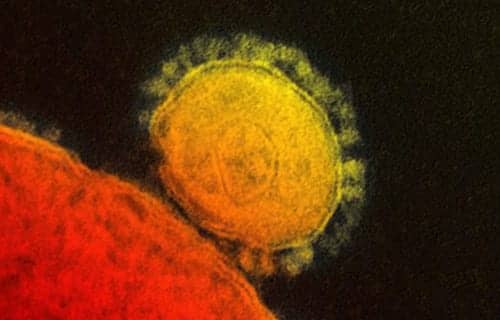This file photo provided by the National Institute for Allergy and Infectious Diseases shows a colorized transmission of the MERS coronavirus that emerged in 2012.
(Photo11: NIAID via The Canadian Press/AP)Middle East respiratory syndrome (MERS) is one of the World Health Organization’s six “most dangerous emerging pathogens,” according to an article by The Smithsonian. International officials recently gathered in Geneva, Switzerland to select a shortlist of pathogens “likely to cause severe outbreaks in the near future, and for which few or no medical countermeasures exist.”
MERS and Severe Acute Respiratory Syndrome (SARS) are members of the coronavirus family—viruses that usually cause upper respiratory illness. Though transmission seems to come from infected camels, the diseases are both easy to catch from infected peoples’ coughs or sneezes.
Both conditions emerged relatively recently. SARS broke out in Asia in 2003, but the global outbreak was contained and no cases have been reported since 2004. The news isn’t that great concerning MERS: The disease, which started in Saudi Arabia in 2012, broke out again in South Korea this year. The WHO reports that 36 percent of reported patients die. Health officials tell SciDevNet that it’s unlikely a vaccine will be developed anytime soon.
Other pathogens on the list included:
- Crimean Congo hemorrhagic fever
- Ebola virus disease
- Marburg hemorrhagic fever
- Lassa fever
- Nipah and Rift Valley fever
MERS on List of World’s Most Dangerous Emerging Pathogens










